Abstract
Various techniques were employed for preparation of high-titer bacteriophage lysates of Streptococcus lactis, S. cremoris, and S. diacetilactis strains. Infection of a 4-h host culture in litmus milk at 30 C yielded the highest titers (2 × 109 to 4 × 1011 plaque-forming units/ml) for most phages. Host infection in lactose-containing broth produced similar virus numbers only when 0.1 M tris(hydroxymethyl)aminomethane buffer stabilized the pH. The pH at the time of infection as well as the inoculum phage titer were critical in obtaining high titers. Optimum conditions for infection in broth were coupled with a polyethylene glycol concentration procedure to routinely produce milligram quantities of phage from 1 liter of lysate. Neutralization of whey lysates, as a means of storage, offered no survival advantage over unneutralized samples. Storage of phage lysates in a 15% glycerol whey solution at -22 C yielded a high rate of survival in most cases, even with repeated freezing and thawing, over a period of 24 months.
Full text
PDF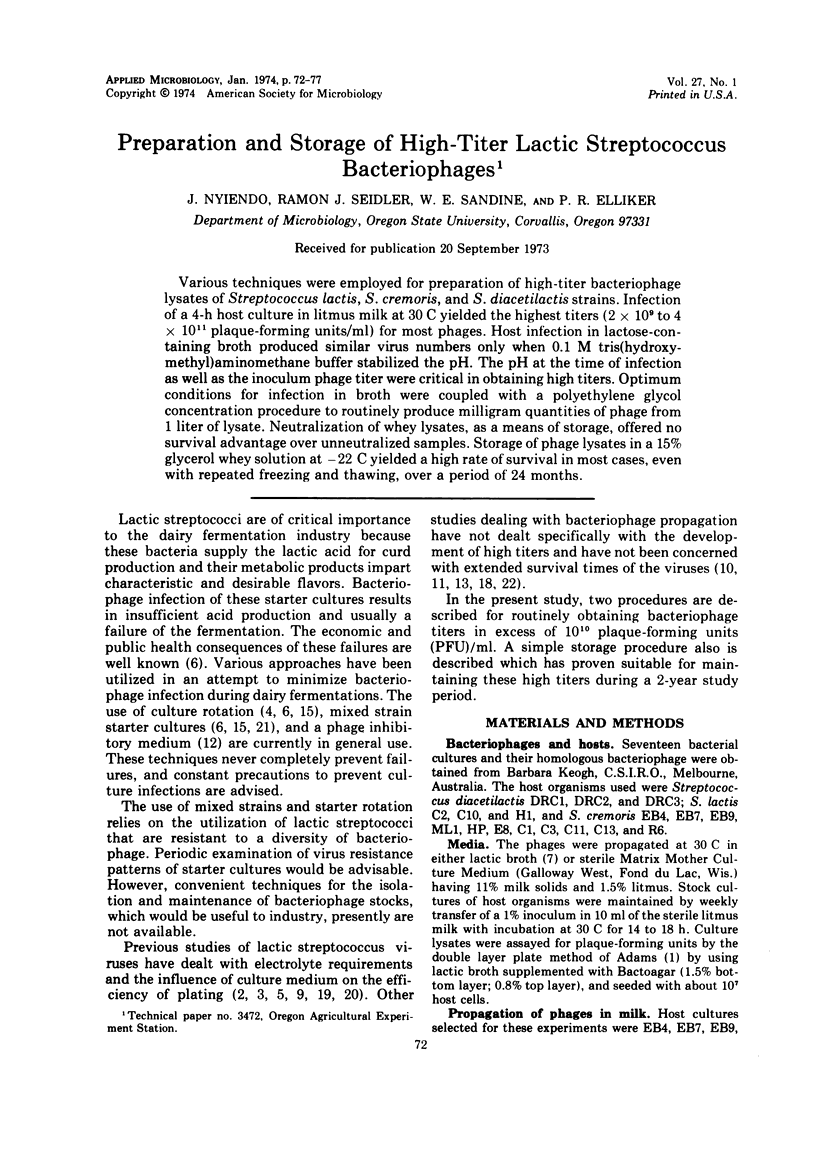
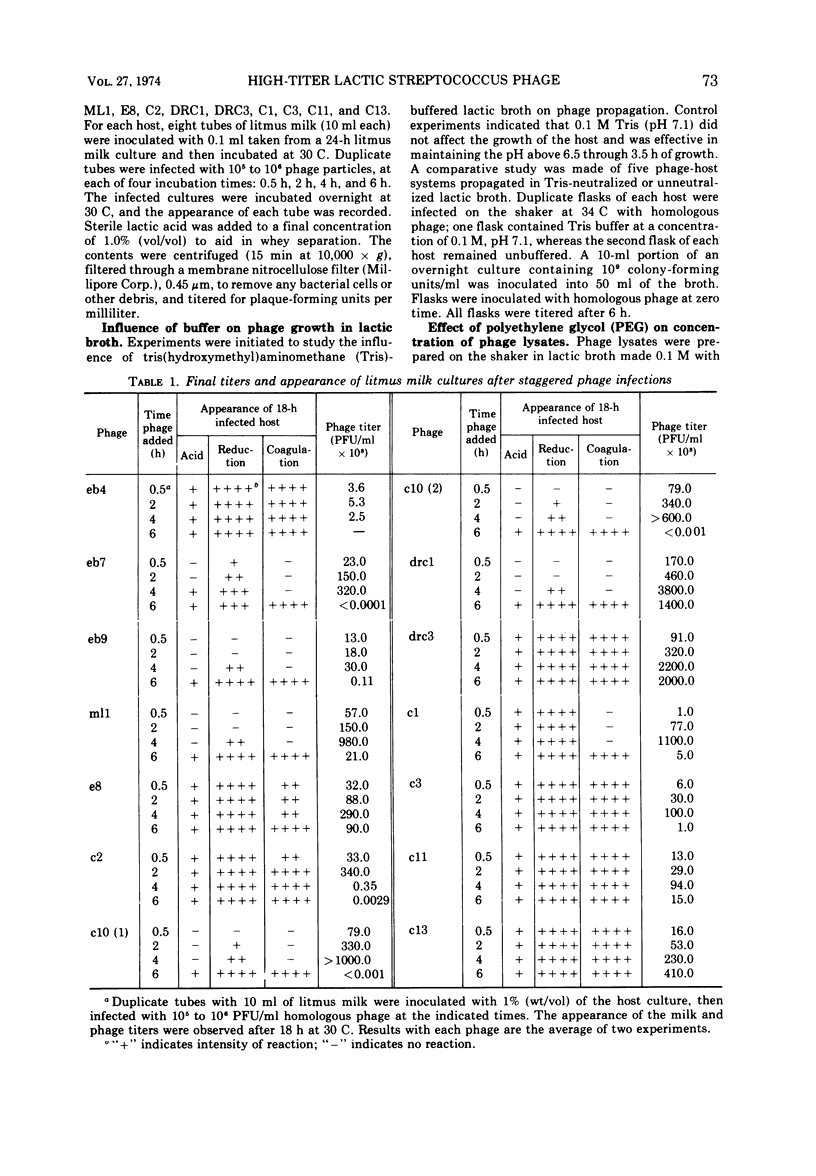
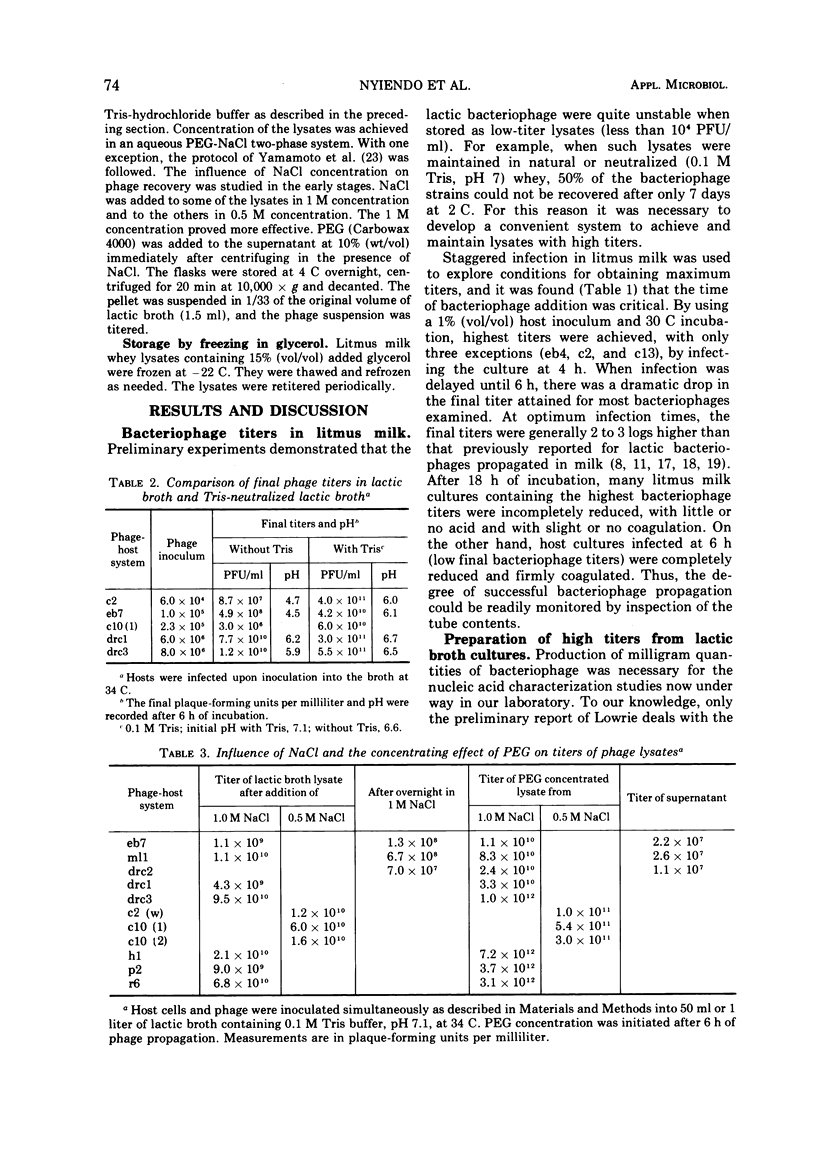
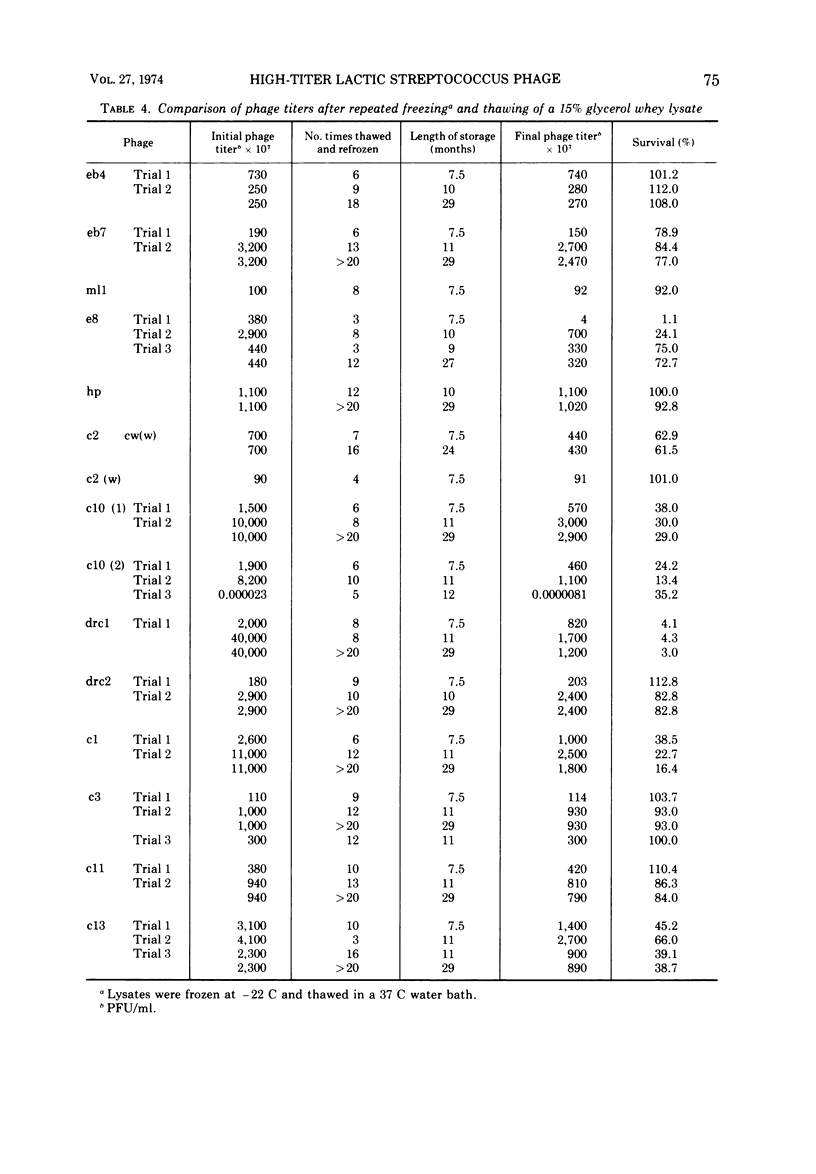
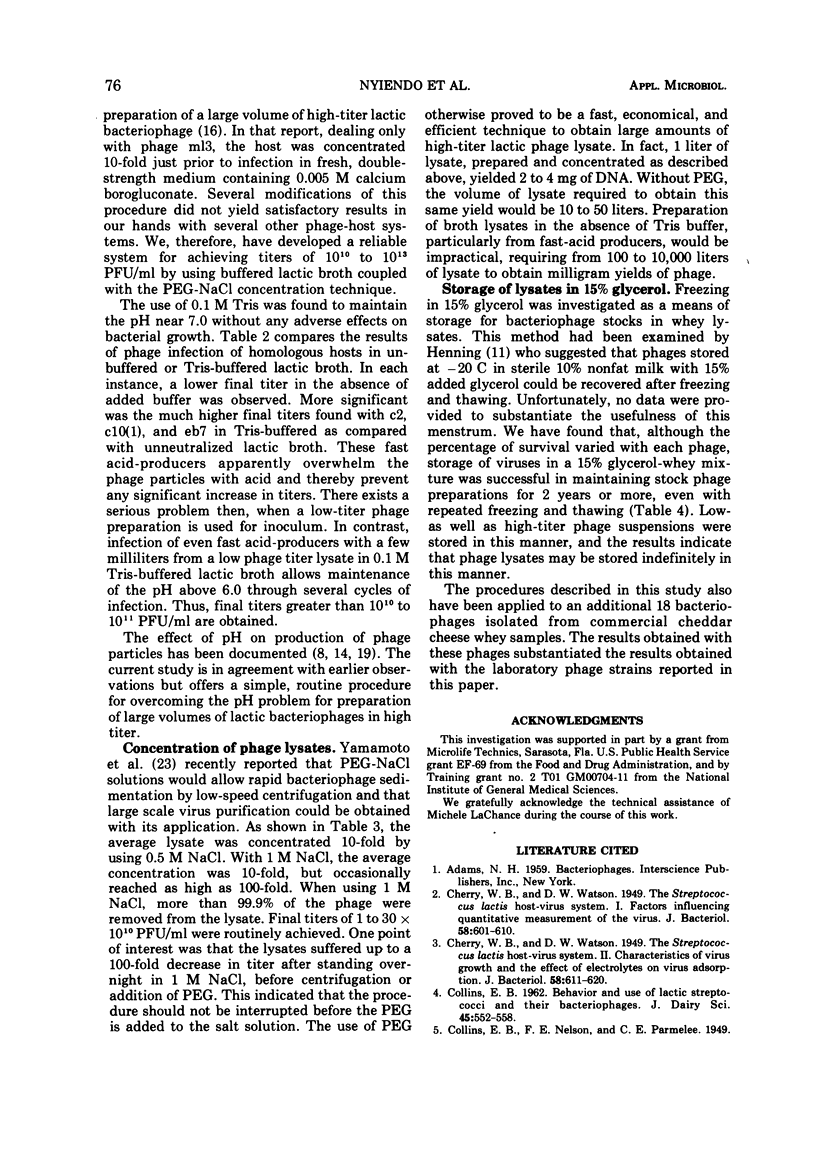
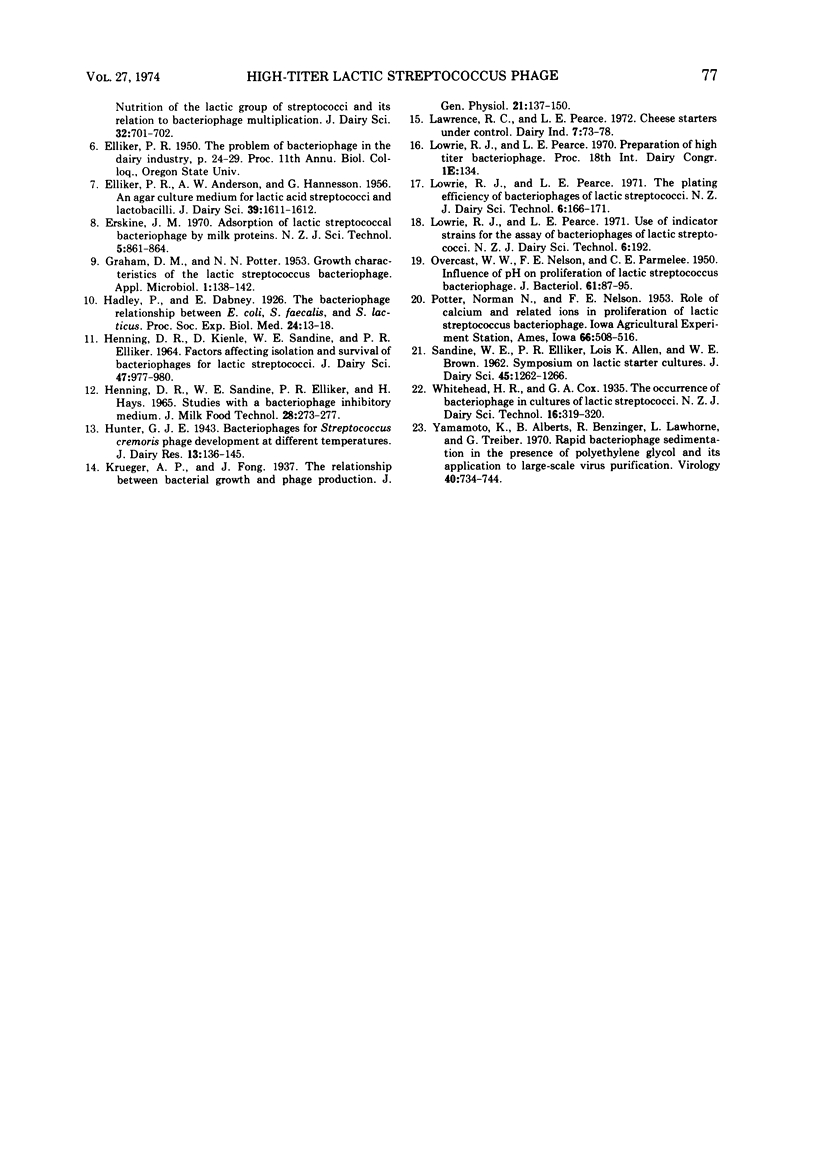
Selected References
These references are in PubMed. This may not be the complete list of references from this article.
- CHERRY W. B., WATSON D. W. The Streptococcus lactis host-virus system; characteristics of virus growth and the effect of electrolytes on virus adsorption. J Bacteriol. 1949 Nov;58(5):611–620. doi: 10.1128/jb.58.5.611-620.1949. [DOI] [PMC free article] [PubMed] [Google Scholar]
- CHERRY W. B., WATSON D. W. The Streptococcus lactis host-virus system; factors influencing quantitative measurement of the virus. J Bacteriol. 1949 Nov;58(5):601-10, illust. doi: 10.1128/jb.58.5.601-610.1949. [DOI] [PMC free article] [PubMed] [Google Scholar]
- GRAHAM D. M., POTTER N. N. Growth characteristics of the lactic Streptococcus bacteriophage. Appl Microbiol. 1953 May;1(3):138–142. doi: 10.1128/am.1.3.138-142.1953. [DOI] [PMC free article] [PubMed] [Google Scholar]
- OVERCAST W. W., NELSON F. E., PARMELEE C. E. Influence of pH on proliferation of lactic Streptococcus bacteriophage. J Bacteriol. 1951 Jan;61(1):87–95. doi: 10.1128/jb.61.1.87-95.1951. [DOI] [PMC free article] [PubMed] [Google Scholar]
- POTTER N. N., NELSON F. E. Role of calcium and related ions in proliferation of lactic streptococcus bacteriophage. J Bacteriol. 1953 Nov;66(5):508–516. doi: 10.1128/jb.66.5.508-516.1953. [DOI] [PMC free article] [PubMed] [Google Scholar]
- Yamamoto K. R., Alberts B. M., Benzinger R., Lawhorne L., Treiber G. Rapid bacteriophage sedimentation in the presence of polyethylene glycol and its application to large-scale virus purification. Virology. 1970 Mar;40(3):734–744. doi: 10.1016/0042-6822(70)90218-7. [DOI] [PubMed] [Google Scholar]


